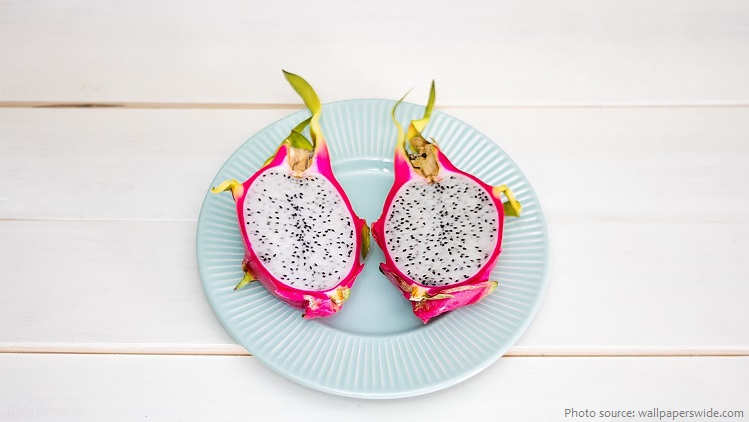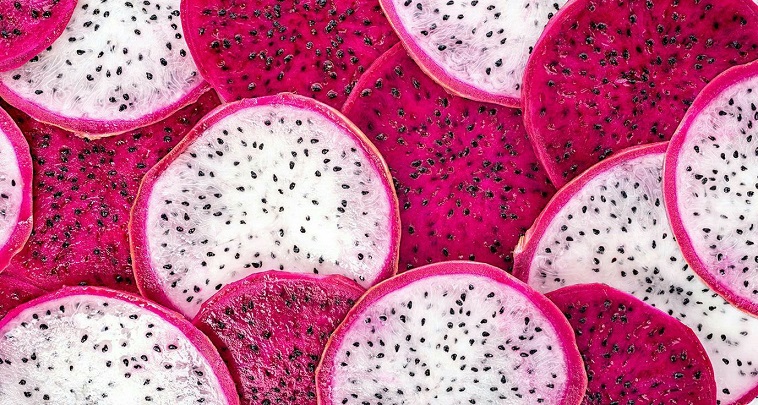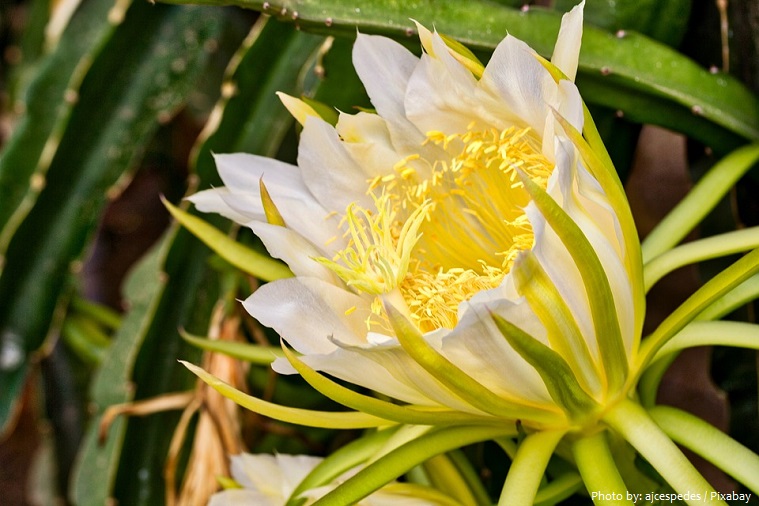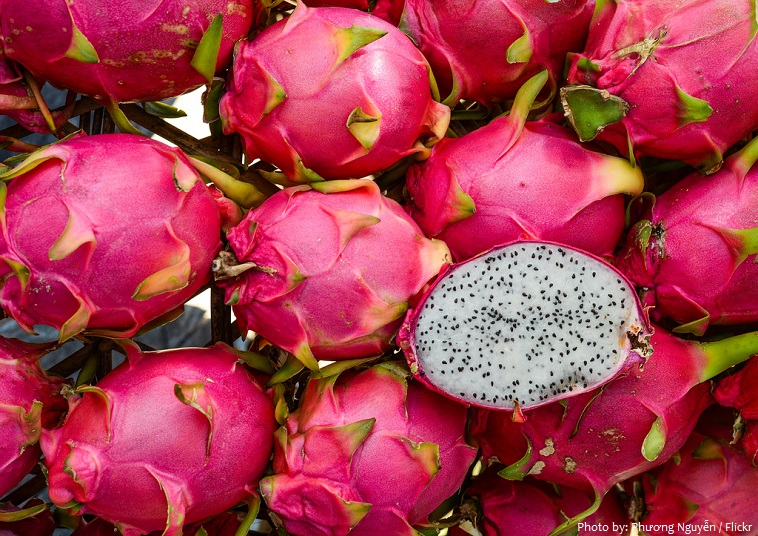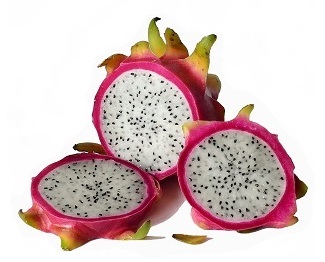Pitaya, or pitahaya also known as dragon fruit is the fruit of several different cactus species indigenous to the Americas.
Today, pitahaya is cultivated in Southeast Asia, Florida, the Caribbean, Australia, and throughout tropical and subtropical world regions.
Pitahaya is often considered a tropical “super-food” because of its wealth of benefits, and its somewhat “under the radar” quality that makes it less well known than many mainstream fruits and health foods.
These fruits are commonly known in English as “dragon fruit”, reflecting its vernacular Asian names.
The names pitahaya and pitaya derive from Mexico, and pitaya roja in Central America and northern South America, possibly relating to pitahaya for names of tall cacti species with flowering fruit.
The pitahaya’s scientific name Hylocereus undatus is derived from the Greek word hyle (woody), the Latin word cereus (waxen) and the Latin word undatus, which refers to the wavy edges of its stems.
Pitahaya stems are scandent (climbing habit), creeping, sprawling or clambering, and branch profusely. There can be 4-7 of them, between 5 and 10 m (16.5 to 33 ft)or longer, with joints from 30 to 120 cm (12 to 47 in) or longer, and 10 to 12 cm (4 to 5 in) thick. Spines are 1 to 4 mm (0.04 to 0.16 in) long,
The scented flowers are 25 to 30 cm (10 to 12 in) long and 15 to 17 cm (6 to 7 in) wide. Pitaya flowers bloom overnight and usually wilt by the morning. They rely on nocturnal pollinators such as bats or moths for fertilization.
The fruit is oblong to oval, from 6 to 12 cm (2.4 to 2.8 in) long and 4 to 9 cm (1.4 to 3.5 in) thick, with large bracteoles, with white pulp and edible seeds are black.
The fruit’s texture is sometimes likened to that of the kiwifruit because of its black, crunchy seeds. The flesh is bland, mildly sweet and low in calories. The seeds have a nutty taste.
There are 268 calories in 100 grams (3.5 ounces) of pitahaya.
Pitahaya possess a lot of vitamins, minerals, and other nutrients beneficial for your body. It gives you energy, dietary fiber, healthy fat, and protein. For its vitamin content, this fruit contains a lot of vitamin C, along with vitamin B3 (niacin), vitamin B1 (thiamin), and vitamin B2 (riboflavin). The mineral wealth of this fruit includes magnesium, calcium, phosphorus, iron, and sodium. And finally, it contains the phytonutrient carotene as well as powerful antioxidants.
Pitahaya health benefits include supporting bone health and density, improve digestion, enhancing the skin, supporting good metabolic rate, improve bone health and density, good for weight loss, prevents or treat high blood pressure, fighting fungal and prevent arthritis.
Commonly, dragon fruit is eaten fresh or as is accompanied with ice cream or other desserts.
Dragon fruit is also used to flavor (and color) juices and alcoholic beverages, such as “Dragon’s Blood Punch” and the “Dragotini”. The flowers can be eaten or steeped as tea.
Pitahaya in the Sonoran Desert has been an important food source for indigenous peoples of the Americas.
According to Aztec literature, Pitahaya fruits date back to the 13th century.
